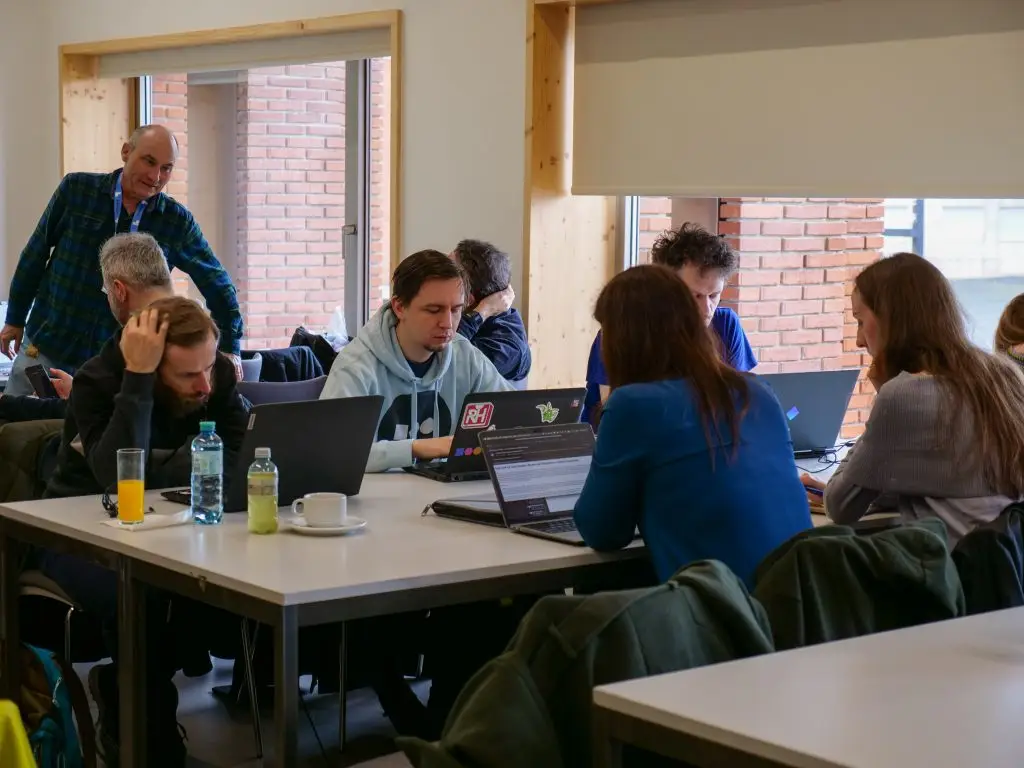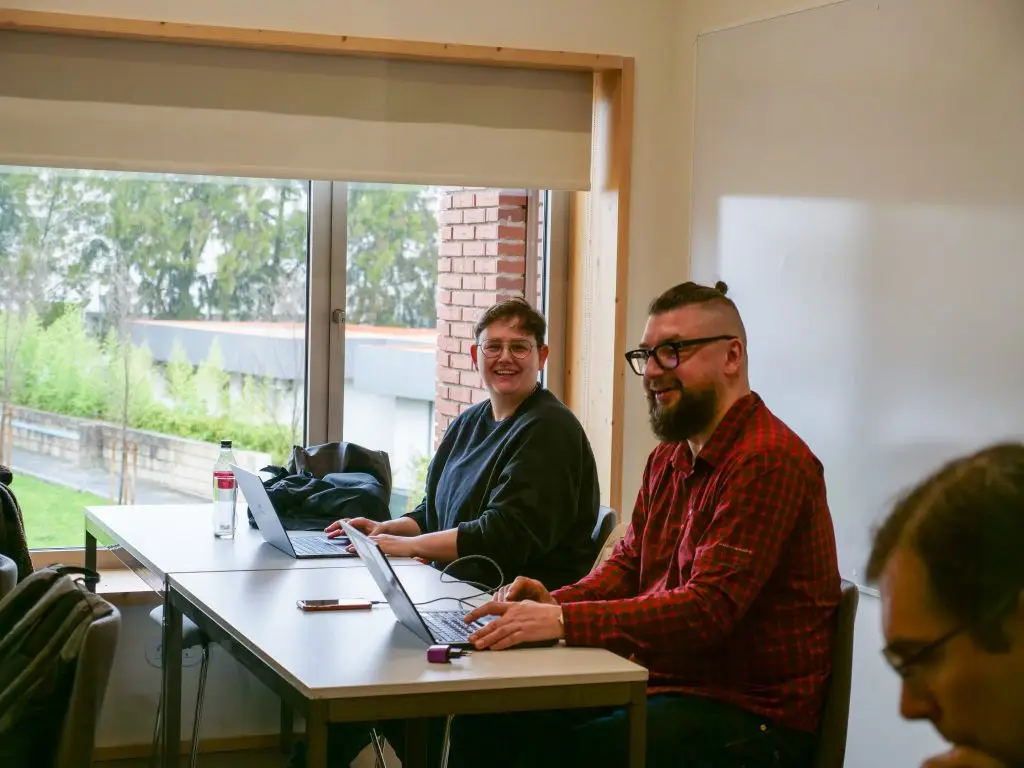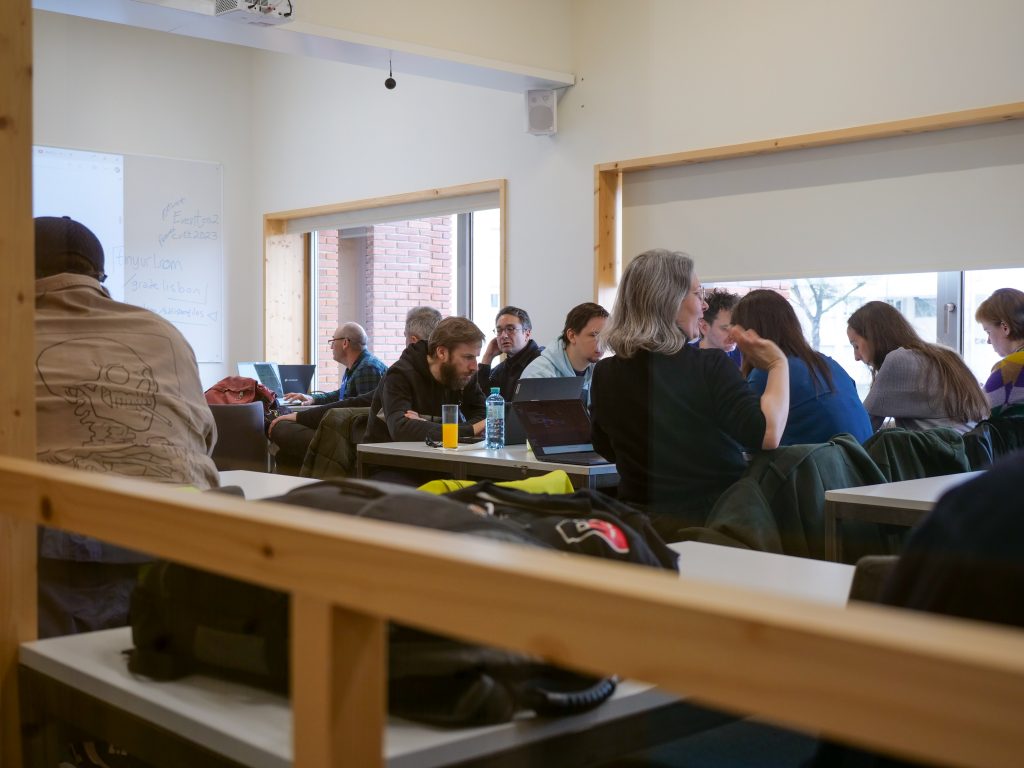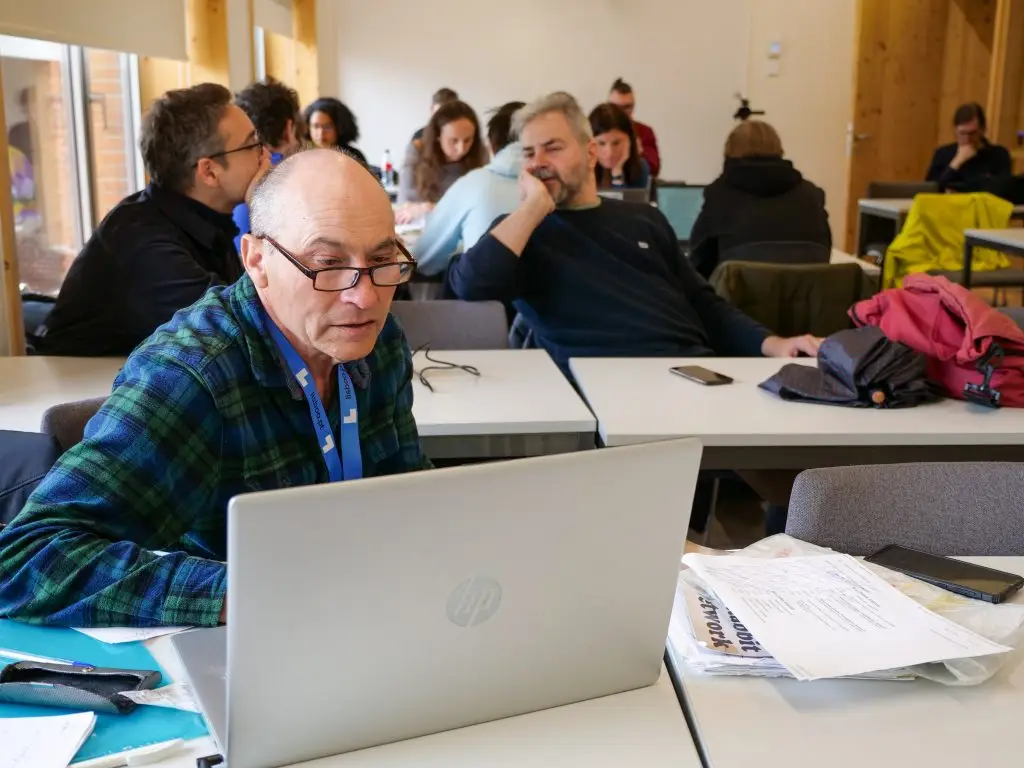The purpose of the workshop was to discuss the current state of the edited book to be published by Amsterdam University Press. The workshop was held over two days (27-28/02/2025) at ISCTE Instituto Universiatário de Lisboa, hosted by Dr Carlos Cunha and facilitated by Dr Kieran Nolan.
Day one saw a series of chapter presentations both onsite and remotely accompanied by robust and lively discussion. The second day of the event included tutorials in academic referencing and further discussions and feedback as the authors continued their chapter drafts, focused on completion of the book project for publication in summer 2026.
Europe has a particular, but shared digital heritage, leading to a simultaneous, but divergent history in the use of computers for creative means and ends. Creative computing is understood as a result of any creative process that requires a computational platform. Examples of results that arise from using computers creatively include – among many others – cracking, chiptunes and demos. While the creative process is central to the ‘creative’ aspect of computing, there are extensive and embedded deep and broad communities and cultures that have formed around these. Some of these were specific to the time, such as cracking communities, others continue to this day, such as demoscenes, and others have manifestly altered while maintaining their definition, such as school computing clubs. It is held that it is unlikely that creative computing in its historic or contemporary forms could not exist or be sustained without individual, group, community, institutional, and cultural support at the local, regional, national, international, or transnational level.
As early research results in the EU funded Cooperation on Science and Technology project ‘Grassroots of Digital Europe’ has shown, certain areas of Europe have received intensive analysis in the formation of computing at grassroots levels. This tends to follow a linguistic inclination towards Anglo-American studies of creative computing. These areas are important reference points, and their influence is acknowledged. Nevertheless, there remains extensive geographical and topical areas throughout Europe where the use of computers for creative purposes has not been subject to sustained investigation. This collection seeks to address this gap and provide original insight into the unique features and formation of creative computing in Europe.
Recent years have seen an increased interest in the histories of creative computing, with university presses dedicating series’ towards exploring its influence in shaping the digital society of the 21st century. While welcome, US sanctioned histories of creative computing tend to skew the publication of academic research to specific audiences and can knowingly or unknowingly obfuscate the importance of overlooked or minority groups in the creation of a culture that had specialised characteristics due to its own eclecticism. This collection, published by a European university press, looks to address these structural and content gaps.
Chapters report on results of primary research; archival research; methodologies of creative computing; theoretical and conceptual aspects of creative computing; or a combination of some or all of these.
Silicon Dawn Chapter Presentations at Lisbon workshop:
- Nathalie Fridzema – From Hackers to Homepages: An Exploration of XS4ALL and Early Creative Computer Practices in the Netherlands.
- David Betzing – The Many Lives of Boulder Dash in East Germany.
- Pierre-Yves Hurel – Corpus Quest: Excavating Local Video Game Productions.
- Marco Benoît Carbone – Nationalising/Denationalising Videogame Production: Italy’s Simulmondo and Idea Software in Europe (1987-1993).
- Gaja Zornada – Creative Software Distribution and Grassroots Publishing in Slovenia and Yugoslavia. Copyright Protection Hacking and Implementing with 1980s Tactics and Techniques for Competing with Import Restrictions.
- Alexandra Tatar, Andrada Fiscutean, Alexandra Bardan – A Web of Cables: The History and Legacy of Early LANs in Romania, the Backbone of Creative Computing
- Miroslaw Filiciak, Michal Owczarek – Connecting Computer Enthusiasts in Central and Eastern Europe: A Case Study of Polish BBSes.
- Meliha Handžić, Ivana Atanasovska, Milica Knežević, Natalija Majsova, Marija Šegan Radonić – Women Creative Computing pioneers in the (Post-)Yugoslav Space.
- Andrzej Lichnerowicz, Maciej Grzeszczuk, Kinga Skorupska – Empirical Insights into the Evolution and Intersections of the Demoscene and Cracker Scene.
- Michal Kabát, Juraj Kovalčík, Vojtěch Straka – Hold my Beer! Pong Clones in Communist Czechoslovakia.
- Ivo Furman, Arda Erdikman – “Attention Users, Please Refrain from Modifying Your Ataris” – Corporate Region-Locking Practices and Creative Computing Responses in Türkiye
- Kieran Nolan, Alex Wade – Selling the US Gold Dream to Europe
- Veronika Hanáková – Unfulfilled Promises – The Portrayal of Personal Computers on Czechoslovak Television in the 1980s.
- Regina Seiwald – Divided by Politics, United by Play: Computing in East and West Germany during the 1980s.
Histories and Cultures of Creative Computing in Europe (1970-2000): Silicon Dawn is co-edited by Dr Natalija Majsova (University of Ljubljana), Dr Kieran Nolan (Dundalk Institute of Technology), and Dr Alex Wade (University of Birmingham). For more details please contact the editorial team at natalija.majsova@fdv.uni-lj.si, kieran.nolan@dkit.ie, and Alex.Wade@bcu.ac.uk.






